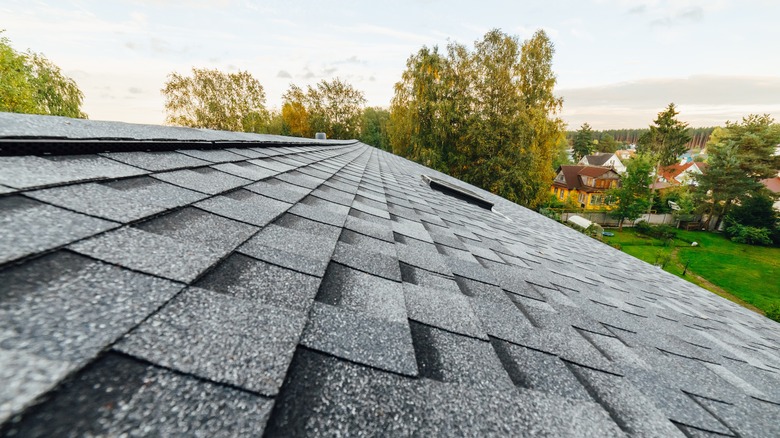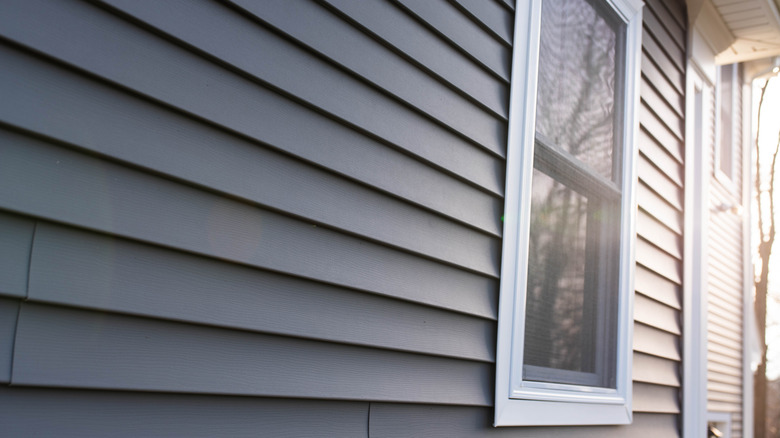3 Home Improvement Projects To Complete At The End Of Summer
When the end of summer rolls around, the temperature tends to drop, and the outdoors become more inviting. According to Weather Underground, even though September is considered a summer month, it's also when you can catch your first glimpse of fall. During this time is when you should consider completing a home project or two.
Over time, many areas of our homes will need to be upgraded. This could be something major such as a leaky roof or something simple as repainting a deck. Nonetheless, at some point or another, you will have to go through the process of making these fixes.
Obviously, no one wants to fix their roof in the middle of the cold winter or the hot summer heat. Therefore, taking the time between the two seasons to examine areas that need attention is a great way to get ahead of the game. Before summer ends, here are three home improvement projects you may need to complete.
1. Check the roof for any damages
One of the most important things you need to do when the temperature drops is to check your roof for any damages. As Central Roofing points out, your roof serves more than one purpose. The main intent is insulation from the Earth's natural environment. During the winter months, when it snows or ices over, your roof is first in line to take a hit. Additionally, it also protects the home from drainage. The roof is known to hold a substantial amount of water; however, if there is a hole or leak somewhere, the water can make its way into your home. This can then cause more extensive problems such as mold and rotted framing (via Aderhold Roofing).
To prevent these issues, take the time to give your roof a thorough look. Check and see if there are any loose or missing singles. If there are, look into that area for any potential holes or soft spots because this could be a sign that you may need to replace this area or your roof as a whole. If you don't see any damage, go ahead and replace those shingles. While you're up there, it's also good to examine your gutters. Clean out any fallen leaves and debris that can get stuck in them. You can also check for any black residue, as this is also a sign of worn-out shingles.
2. Inspect the home's siding
Next, it's crucial to check your home's siding for any impairments. While many think that this part of your home is just for show, it also serves many purposes. For one, much like the roof, the siding protects your home from rain, snow, and anything else Mother Nature may throw your way. It also acts as extensive insulation from the heat and cold, as per Home Solutions. Therefore, it's crucial that this part of your home is in perfect shape before the winter months hit. When completing this task, there are a few things you should keep an eye out for.
If the siding is bent, warped, or pulled away from the home, then it's time to replace it. This usually means that there is water leaking into the foundation of your home and causing damage. Be sure to check for any soft spots as well, as this can be a sign of rotting boards. There may be a few subtle signs of siding damage within your home such as peeling paint or loose wallpaper. When this happens, there is likely moisture between the siding and foundation. If you notice any of these issues, fix them immediately. Failure to do so can eventually cause more permanent issues and a significant amount of money.
3. Give your deck a makeover
Lastly, take a look at all of your other outdoor luxuries, such as your deck. Just like your home's roof and siding, over time, this structure will need upgrades and replacing as well. According to Lifetime Exteriors, there are several ways to tell if your deck requires repairs. For starters, there are obvious signs such as cracks in the board, missing nails, or boards that are not secure. However, there are other deeper indicators that you may not catch at first glance. Check underneath the deck itself for any rotting boards or termites. If your deck comes with rails, it's crucial to examine those because they also need repairs and maintenance from time to time. Any loose railings or posts need to be fixed as these are safety hazards.
If you don't notice any damage, it's still best to consider the age of your deck. Straight Line Construction points out that decks with untreated wood can last for as long as 30 years while treated wood can last up to 50 years. If your deck is nearing these ages, it may be best to go ahead and make a few upgrades, or you can opt to give it a makeover. To do this, you can stain the wood, paint it, or even buy new outdoor furniture. Either way, this will give your outdoor space a fresh look for the upcoming cold season as well as next summer.



